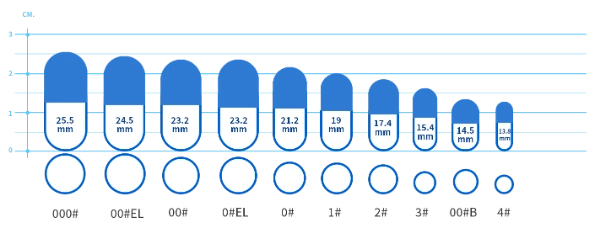Heavy Metal Detection Method for Empty HPMC Vegetarian Capsules
Article source:Wecaps Mar 15, 2024 1155
HPMC (Hydroxypropyl Methylcellulose) vegetarian capsules are popular in the pharmaceutical and nutraceutical industries due to their suitability for a variety of formulations and their appeal to vegetarian and vegan consumers. In this blog post, from traditional techniques to advanced analytical methods, Wecaps will explore the various methods available for the detection of heavy metals in empty HPMC vegetarian capsules for sale.
I. Understanding Heavy Metals
Before delving into the detection methods, it is crucial to understand what heavy metals are and why they pose a potential threat. Heavy metals are naturally occurring elements that have a high atomic weight and density. While some heavy metals, such as iron and zinc, are essential for human health in trace amounts, others like lead, mercury, cadmium, and arsenic can be toxic even at low concentrations. These toxic heavy metals can find their way into the manufacturing process of empty HPMC vegetarian capsules through various sources, including raw materials, equipment, and environmental contamination.

II. Traditional Detection Methods
1. Atomic Absorption Spectroscopy (AAS):
A widely used technique for heavy metal detection, AAS measures the absorption of light by metal atoms in a sample. It offers good sensitivity and selectivity but requires sample digestion, making it time-consuming and labor-intensive.
2.Inductively Coupled Plasma-Mass Spectrometry (ICP-MS):
This technique combines the high-temperature plasma source of ICP with the mass spectrometry detection capabilities. ICP-MS provides excellent sensitivity, accuracy, and the ability to detect multiple heavy metals simultaneously. However, it requires expensive equipment and skilled operators.
III. Advanced Analytical Methods
1. X-ray Fluorescence Spectroscopy (XRF):
XRF is a non-destructive technique that measures the characteristic X-rays emitted by elements when excited by X-ray radiation. It offers rapid analysis, high sensitivity, and the ability to detect multiple heavy metals simultaneously. However, it may have limitations in detecting certain elements at low concentrations.
2.Inductively Coupled Plasma-Optical Emission Spectroscopy (ICP-OES):
Similar to ICP-MS, ICP-OES utilizes the high-temperature plasma source but measures the emission of light instead of mass spectrometry. It provides excellent sensitivity, precision, and the ability to detect a wide range of elements. However, it requires skilled operators and may have limitations in detecting certain elements.
3. Laser-Induced Breakdown Spectroscopy (LIBS):
LIBS uses a high-energy laser pulse to generate a plasma on the sample surface, which emits characteristic light. It offers rapid analysis, minimal sample preparation, and the ability to detect multiple heavy metals. However, it may have limitations in detecting certain elements and requires calibration standards.
IV. Regulatory Standards and Compliance
To ensure the safety and quality of empty HPMC vegetarian capsules, regulatory bodies such as the FDA (Food and Drug Administration) and pharmacopoeias have established maximum allowable limits for heavy metals. Manufacturers must comply with these standards and conduct regular testing to ensure their products meet the required specifications.
Wecaps has advanced testing equipment, and the production process complies with GMP standards. At the same time, during the strict testing process, professionals will conduct manual inspections. The heavy metal content of our vegetarian capsules is well below the national standard of 2 parts per million. Our reliable capsule quality is worthy of your trust!

Frequently Asked Questions
1. Why is it important to detect heavy metals in empty HPMC vegetarian capsules?
The heavy metal detection method for HPMC capsules involves the use of analytical techniques to identify and quantify the presence of heavy metals in the capsules. This typically includes sample preparation, such as digestion or extraction, followed by analysis using methods like atomic absorption spectroscopy or inductively coupled plasma mass spectrometry. The goal is to ensure that the capsules meet regulatory standards for heavy metal content.
2. Are there any regulatory guidelines or limits for heavy metal content in HPMC vegetarian capsules?
Yes, there are regulatory guidelines and limits for heavy metal content in HPMC capsules. These guidelines ensure the safety and quality of the capsules by specifying acceptable levels of heavy metals such as lead, cadmium, mercury, and arsenic.
Related News of Empty HPMC Capsules
The Advantages and Health Benefits of Empty HPMC Capsules
Storage of HPMC Empty Vegetarian Capsules
Quality Control Standards for HPMC Empty Vegetarian Capsules
What is the Difference Between Pullulan and HPMC Empty Capsules?





